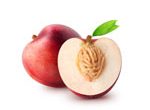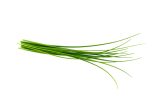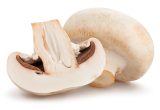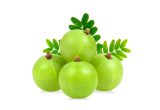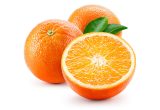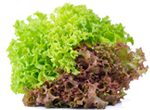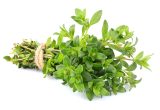Artichoke

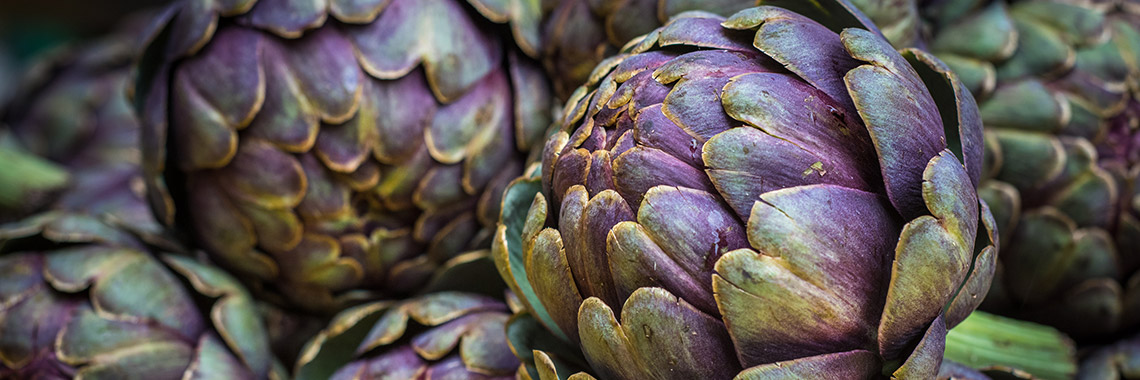
Description
- The artichoke (Cynara scolymus L.) belongs to the Asteraseae family.
- It is a vegetable mostly produced in the Mediterranean region (FAO, 2018).
PHYSICAL AND ORGANOLEPTIC CHARACTERISTICS
- The bitter taste of artichoke leaves and flowers is attributed to sesquiterpene lactones, such as cynaropicrin and cynarin (Hegazy, 2016).
- Among the pigments responsible for the colour of the artichoke are anthocyanin derivatives such as cyanidin, peonidin and delphinidin (García-Martínez, 2017).
- The green leaves of the Jerusalem artichoke, split or not, are potential sources of chlorophyll, the pigment responsible for the green colour of the plants (Kaszás, 2018)
- Sixty-four volatile compounds have been identified in artichoke bracts. The volatile profile showed that sesquiterpene hydrocarbons and non-terpene derivatives are the main volatile compounds emitted by the bracts of the “Hyères purple” and “Oran white” cultivars (Dabbou, 2016).
COMPOSITION CHARACTERISTICS (excluding macronutrients, vitamins and minerals)
- Artichokes have a large number and diversity of phenolic compounds such as monophenols (caffeic and coumaric acids) and polyphenols (5-O-caffeoylquinic, 1,5-di-O-caffeoylquinic, 3,4-di-O-caffeoylquinic and 1,3-di-O-caffeoylquinic acids) (García-Martínez, 2017). These phenolic compounds are known to have significant antioxidant activity (Blanco, 2018).
- The phenolic content varies significantly depending on the position of the bracts on the artichoke head and the heat treatments (Ruiz-Cano, 2014).
- Artichokes are a significant source of flavonoids, compounds belonging to the family of polyphenols. Flavonoids help protect against cardiovascular disease, certain types of cancer, degenerative disorders, platelet aggregation and osteoporosis. The transcription factor CcMYB12 regulates the biosynthesis of these flavonoids, specifically in the immature inflorescence and young leaves of artichokes (Blanco, 2018).
- Artichokes are also a natural source of fibre and inulin, a polysaccharide naturally produced by many plants (Rizzo, 2019). Tunisian researchers looked at their high total dietary fibre composition and low fat content. The fibres showed a good water and oil retention capacity (8.17 g/g and 16.17 g/g respectively) (Boubaker, 2016).
- The trace element and mineral profile of artichokes is significantly influenced by genotype, head fraction, location and season (Pandino, 2011).
RAW
The following values are approximate and depend on variety, season, ripeness, cultivation conditions, etc. Steamed artichokes provide an average of 47.30 calories (kcal) per 100 g, i.e. 195 kJ. An artichoke weighs on average 300 g, which represents an energy intake of approximately 141.90 kcal.
COMPOSITION TABLES
For each nutrient, the tables provide information on the content, minimum and maximum values, as well as the percentage of Dietary Reference Values (DRVs) for 100g net of pressure steamed artichoke.
MACRONUTRIENTS
| Constituent (g) | Average content |
Min-Max per 100g |
DRV% |
|---|---|---|---|
| Water | 84,9 | - | - |
| Fibers | 5,40 | - | - |
| Carbohydrates | 4,92 | - | 1,89 |
| Sugars | 0,99 | - | 1,10 |
| Lipids | 0,18 | 0,15 - 0,20 | 0,26 |
| Saturated fat | 0,036 | - | 0,18 |
| Protein | 3,20 | 3,13 - 3,27 | 6,40 |
| Constituent (g) | Amount | Min-Max | DRV% |
|---|---|---|---|
| Water | Ciqual 2020 | - | - |
| Fibers | Ciqual 2020 | - | - |
| Carbohydrates | Ciqual 2020 | - | Règlement (UE) N°1169/2011 du parlement Européen et du conseil du 25 octobre 2011 |
| Sugars | Ciqual 2020 | - | Règlement (UE) N°1169/2011 du parlement Européen et du conseil du 25 octobre 2011 |
| Lipids | Ciqual 2020 | - | Règlement (UE) N°1169/2011 du parlement Européen et du conseil du 25 octobre 2011 |
| Saturated fat | Ciqual 2020 | - | Règlement (UE) N°1169/2011 du parlement Européen et du conseil du 25 octobre 2011 |
| Protein | Ciqual 2020 | - | Règlement (UE) N°1169/2011 du parlement Européen et du conseil du 25 octobre 2011 |
Zoom on carbohydrates
- The content in carbohydrates of raw artichoke (4.92 g per 100 g) is higher than the average content present in raw vegetables (4.45 g per 100 g).
- Raw artichoke is low in sugar* (0.99 g per 100 g) as it contains no more than 5 g per 100 g.
Zoom on fibres
- The fibre content of raw artichoke is 5.40 g per 100 g, which is more than 3 g per 100 g; it is therefore a source of fibre*.
- The main fibre present in artichokes is inulin (Ruiz-Cano, 2014).
- Its fibre content is higher than the average amount found in raw vegetables (2.43 g per 100 g).
Zoom on protein
- The protein content of raw artichokes (3.20 g per 100 g) is higher than the average amount in raw vegetables (1.87 g per 100 g).
Zoom on lipids
- The content in fats of raw artichoke (0.18 g for 100 g) is lower than the average content present in vegetables (0.56 g for 100 g).
- Raw artichoke is fat-free* as it contains less than 0.5 g fat per 100 g.
*Regulation (EC) No 1924/2006 of the European Parliament and of the Council of 20 December 2006 on nutrition and health claims made on foods.
MINERALS AND TRACE ELEMENTS
| Constituent | Average content |
Min-Max per 100g |
DRV% |
|---|---|---|---|
| Calcium (mg) | 52 | 44 - 83 | 6,50 |
| Chloride (mg) | - | - | - |
| Copper (mg) | 0,23 | - | 23 |
| Iron (mg) | 1,19 | 0,36 - 1,43 | 8,50 |
| Iodine (µg) | 0,50 | 0,20 - 0,75 | 0,33 |
| Magnesium (mg) | 47,80 | 28 - 60 | 12,75 |
| Manganese (mg) | 0,26 | - | 13 |
| Phosphorus (mg) | 81,20 | 57,30 - 103 | 11,60 |
| Potassium (mg) | 387 | 356 - 445 | 19,35 |
| Selenium (µg) | 0,23 | NC - 0,70 | 0,42 |
| Sodium (mg) | 60,50 | 8,50 - 94 | - |
| Zinc (mg) | 0,49 | - | 4,90 |
| Constituent | Amount | Min-Max | DRV% |
|---|---|---|---|
| Calcium (mg) | Ciqual 2020 | - | Règlement (UE) N°1169/2011 du parlement Européen et du conseil du 25 octobre 2011 |
| Chloride (mg) | - | - | Règlement (UE) N°1169/2011 du parlement Européen et du conseil du 25 octobre 2011 |
| Copper (mg) | Ciqual 2020 | - | Règlement (UE) N°1169/2011 du parlement Européen et du conseil du 25 octobre 2011 |
| Iron (mg) | Ciqual 2020 | - | Règlement (UE) N°1169/2011 du parlement Européen et du conseil du 25 octobre 2011 |
| Iodine (µg) | Ciqual 2020 | - | Règlement (UE) N°1169/2011 du parlement Européen et du conseil du 25 octobre 2011 |
| Magnesium (mg) | Ciqual 2020 | - | Règlement (UE) N°1169/2011 du parlement Européen et du conseil du 25 octobre 2011 |
| Manganese (mg) | Ciqual 2020 | - | Règlement (UE) N°1169/2011 du parlement Européen et du conseil du 25 octobre 2011 |
| Phosphorus (mg) | Ciqual 2020 | - | Règlement (UE) N°1169/2011 du parlement Européen et du conseil du 25 octobre 2011 |
| Potassium (mg) | Ciqual 2020 | - | Règlement (UE) N°1169/2011 du parlement Européen et du conseil du 25 octobre 2011 |
| Selenium (µg) | Ciqual 2020 | - | Règlement (UE) N°1169/2011 du parlement Européen et du conseil du 25 octobre 2011 |
| Sodium (mg) | Ciqual 2020 | - | - |
| Zinc (mg) | Ciqual 2020 | - | Règlement (UE) N°1169/2011 du parlement Européenet du conseil du 25 octobre 2011 |
Zoom on minerals and trace elements
- Raw artichoke is a source of:
- copper because it provides the equivalent of 23% of DRVs for copper, i.e. 0.23 mg per 100 g;
- potassium because it provides the equivalent of 19.35% of DRVs for potassium, i.e. 387 mg per 100 g.
- It also contains a significant amount of manganese, magnesium and phosphorus. It provides the equivalent of:
- 13% of DRVs for manganese, i.e. 0.26 mg per 100 g;
- 12.75 % of DRVs for magnesium, i.e. 47.80 mg per 100 g;
- 11.60 % of DRVs for phosphorus, i.e. 81.20 mg per 100 g.
- The other minerals and trace elements are present in quantities representing less than 9% of DRVs.
VITAMINS
| Constituent | Average content |
Min-Max per 100g |
DRV% |
|---|---|---|---|
| Provitamin A Beta-carotene (µg) | 8 | - | - |
| Vitamin A equivalent (µg) | 1,33 | - | 0,17 |
| Vitamin B1 (mg) | 0,081 | 0,072 - 0,089 | 7,36 |
| Vitamin B2 (mg) | 0,063 | 0,057 - 0,066 | 4,50 |
| Vitamin B3 (mg) | 1,05 | - | 6,56 |
| Vitamin B5 (mg) | 0,32 | 0,30 - 0,34 | 5,33 |
| Vitamin B6 (mg) | 0,11 | 0,097 - 0,12 | 7,86 |
| Vitamin B9 (µg) | 68 | - | 34 |
| Vitamin C (mg) | 11,70 | - | 14,63 |
| Vitamin E (mg) | 0,27 | 0,19 - 0,47 | 2,25 |
| Vitamin K1 (µg) | 14,80 | - | 19,73 |
| Constituent | Amount | Min-Max | DRV% |
|---|---|---|---|
| Provitamin A Beta-carotene (µg) | Ciqual 2020 | - | - |
| Vitamin A equivalent (µg) | Calcul à partir de la valeur Provitamine A Béta-carotène* | - | Règlement (UE) N°1169/2011 du parlement Européen et du conseil du 25 octobre 2011 |
| Vitamin B1 (mg) | Ciqual 2020 | - | Règlement (UE) N°1169/2011 du parlement Européen et du conseil du 25 octobre 2011 |
| Vitamin B2 (mg) | Ciqual 2020 | - | Règlement (UE) N°1169/2011 du parlement Européen et du conseil du 25 octobre 2011 |
| Vitamin B3 (mg) | Ciqual 2020 | - | Règlement (UE) N°1169/2011 du parlement Européen et du conseil du 25 octobre 2011 |
| Vitamin B5 (mg) | Ciqual 2020 | - | Règlement (UE) N°1169/2011 du parlement Européen et du conseil du 25 octobre 2011 |
| Vitamin B6 (mg) | Ciqual 2020 | - | Règlement (UE) N°1169/2011 du parlement Européen et du conseil du 25 octobre 2011 |
| Vitamin B9 (µg) | Ciqual 2020 | - | Règlement (UE) N°1169/2011 du parlement Européen et du conseil du 25 octobre 2011 |
| Vitamin C (mg) | Ciqual 2020 | - | Règlement (UE) N°1169/2011 du parlement Européen et du conseil du 25 octobre 2011 |
| Vitamin E (mg) | Ciqual 2020 | - | Règlement (UE) N°1169/2011 du parlement Européen et du conseil du 25 octobre 2011 |
| Vitamin K1 (µg) | Ciqual 2020 | - | Règlement (UE) N°1169/2011 du parlement Européen et du conseil du 25 octobre 2011 |
Zoom on vitamins
- Raw artichoke is high in vitamin B9 as it brings the equivalent of 34 % of DRVs for vitamin B9, i.e. 68 µg per 100 g.
- It is also a source of vitamin K1 as it provides the equivalent of 19.73% of DRVs for vitamin K1, i.e. 14.80 µg per 100 g.
- The content in vitamin C of raw artichoke is also notable since it is 11.70 mg per 100 g, which corresponds to 14.63 % of DRVs for vitamin C.
- The other vitamins are present in quantities representing less than 8% of DRVs.
*Calculation performed: Beta Carotene / 6 + retinol
POLYPHENOLS
| Constituent (mg) | Average content |
Min-Max per 100mg |
|---|---|---|
| Flavonoids (mg) | 57,80 | 3,20 - 112,40 |
| of which Flavonols (mg) | - | - |
| of which Flavanols (mg) | - | - |
| of which Flavones (mg) | 57,80 | 3,20 - 112,40 |
| of which Flavanones (mg) | - | - |
| of which Anthocyanins (mg) | - | - |
| of which Dihydrochalcones (mg) | - | - |
| of which Other Flavonoids (mg) | - | - |
| of which Isoflavonoids (mg) | - | - |
| Phenolic Acids (mg) | 202,23 | 136 - 305,10 |
| of which Hydroxybenzoic acids (mg) | - | - |
| of which Hydroxycinnamic acids (mg) | 202,23 | 136 - 305,10 |
| Lignanes (mg) | - | - |
| Stilbenes (mg) | - | - |
| Other Polyphenols (mg) | - | - |
| Total polyphenols | 260,03 | 139,20 - 417,50 |
| Constituent (mg) | Amount | Min-Max |
|---|---|---|
| Flavonoids | Phénol-Explorer version 3.6 Méthode utilisée : Chromatographie | - |
| of which Flavonols | - | - |
| of which Flavanols | - | - |
| of which Flavones | Phénol-Explorer version 3.6 Méthode utilisée : Chromatographie | - |
| of which Flavanones | - | - |
| of which Anthocyanins | - | - |
| of which Dihydrochalcones | - | - |
| of which Other Flavonoids | - | - |
| of which Isoflavonoids | - | - |
| Phenolic Acids | Phénol-Explorer version 3.6 Méthode utilisée : Chromatographie | - |
| of which Hydroxybenzoic acids | - | - |
| of which Hydroxycinnamic acids | Phénol-Explorer version 3.6 Méthode utilisée : Chromatographie | - |
| Lignanes | - | - |
| Stilbenes | - | - |
| Other Polyphenols | - | - |
| Total polyphenols | Phénol-Explorer version 3.6 Méthode utilisée : Chromatographie | - |
Zoom on polyphenols
- Polyphenols are substances with an antioxidant effect.
- Hydroxycinnamic acids, of the phenolic acid family, are predominantly present in raw artichoke composites, accounting for 78% of total polyphenols identified by chromatographic analysis. The main one is 5-caffeoylquinic acid.
- The other polyphenols are flavones, from the flavonoid family.
- Raw artichoke contains a significant amount of polyphenols.
STEAMED
The following values are approximate and depend on variety, season, ripeness, cultivation conditions, etc. Steamed artichokes provide an average of 47.30 calories (kcal) per 100 g, i.e. 195 kJ. An artichoke weighs on average 300 g, which represents an energy intake of approximately 141.90 kcal.
COMPOSITION TABLES
For each nutrient, the tables provide information on the content, minimum and maximum values, as well as the percentage of Dietary Reference Values (DRVs) for 100g net of pressure steamed artichoke.
MACRONUTRIENTS
| Constituent (g) | Average content |
Min-Max per 100g |
DRV% |
|---|---|---|---|
| Water | 81,4 | - | - |
| Fibers | 10,90 | - | - |
| Carbohydrates | 3,24 | - | 1,25 |
| Sugars | 1,90 | - | 2,11 |
| Lipids | < 0,30 | - | - |
| Saturated fat | < 0,01 | - | - |
| Protein | 2,63 | 2,60 - NC | 5,26 |
| Constituent (g) | Amount | Min-Max | DRV% |
|---|---|---|---|
| Water | Ciqual 2020 (valeur issue des analyses Ciqual-Aprifel 2018) | - | - |
| Fibers | Ciqual 2020 (valeur issue des analyses Ciqual-Aprifel 2018) | - | - |
| Carbohydrates | Ciqual 2020 | - | Règlement (UE) N°1169/2011 du parlement Européen et du conseil du 25 octobre 2011 |
| Sugars | Ciqual 2020 (valeur issue des analyses Ciqual-Aprifel 2018) | - | Règlement (UE) N°1169/2011 du parlement Européen et du conseil du 25 octobre 2011 |
| Lipids | Ciqual 2020 (valeur issue des analyses Ciqual-Aprifel 2018) | - | Règlement (UE) N°1169/2011 du parlement Européen et du conseil du 25 octobre 2011 |
| Saturated fat | Ciqual 2020 (valeur issue des analyses Ciqual-Aprifel 2018) | - | Règlement (UE) N°1169/2011 du parlement Européen et du conseil du 25 octobre 2011 |
| Protein | Ciqual 2020 (valeur issue des analyses Ciqual-Aprifel 2018) | - | Règlement (UE) N°1169/2011 du parlement Européen et du conseil du 25 octobre 2011 |
Zoom on carbohydrates
- Steamed artichokes have a carbohydrate content (3.24 g per 100 g) lower than the average content in cooked vegetables (4.85 g per 100 g).
- The carbohydrates are mainly sucrose (1.20 g per 100 g) and fructose (0.70 g per 100 g).
- They are low in sugar* (1.90 g per 100 g) because they contain no more than 5 g per 100 g.
Zoom on fibres
- The fibre content of steamed artichokes is 10.90 g per 100 g, which is more than 6 g per 100 g, meaning they are high in fibre*. This amount is well above the average content in cooked vegetables (2.89 g per 100).
- According to the Ciqual 2020 table, steamed artichokes are the vegetable with the highest fibre content.
- The main fibre present in artichokes is inulin (Ruiz-Cano, 2014).
Zoom on protein
- Its protein content (2.63 g per 100 g) is higher than the average content in cooked vegetables (2 g per 100 g).
Zoom on lipids
- Steamed artichoke is fat-free* as it contains less than 0.5 g fat per 100 g.
*Regulation (EC) No 1924/2006 of the European Parliament and of the Council of 20 December 2006 on nutrition and health claims made on foods.
MINERALS AND TRACE ELEMENTS
| Constituent | Average content |
Min-Max per 100g |
DRV% |
|---|---|---|---|
| Calcium (mg) | 42 | - | 5,25 |
| Chloride (mg) | - | - | - |
| Copper (mg) | 0,05 | - | 5 |
| Iron (mg) | 0,70 | - | 5 |
| Iodine (µg) | < 20 | - | - |
| Magnesium (mg) | 41 | - | 10,93 |
| Manganese (mg) | 0,17 | - | 8,50 |
| Phosphorus (mg) | 56 | - | 8 |
| Potassium (mg) | 480 | - | 24 |
| Selenium (µg) | < 20 | - | - |
| Sodium (mg) | 27 | - | - |
| Zinc (mg) | 0,27 | - | 2,70 |
| Constituent | Amount | Min-Max | DRV% |
|---|---|---|---|
| Calcium (mg) | Ciqual 2020 (valeur issue des analyses Ciqual-Aprifel 2018) | - | Règlement (UE) N°1169/2011 du parlement Européen et du conseil du 25 octobre 2011 |
| Chloride (mg) | Ciqual 2020 (valeur issue des analyses Ciqual-Aprifel 2018) | - | Règlement (UE) N°1169/2011 du parlement Européen et du conseil du 25 octobre 2011 |
| Copper (mg) | Ciqual 2020 (valeur issue des analyses Ciqual-Aprifel 2018) | - | Règlement (UE) N°1169/2011 du parlement Européen et du conseil du 25 octobre 2011 |
| Iron (mg) | Ciqual 2020 (valeur issue des analyses Ciqual-Aprifel 2018) | - | Règlement (UE) N°1169/2011 du parlement Européen,= et du conseil du 25 octobre 2011 |
| Iodine (µg) | Ciqual 2020 (valeur issue des analyses Ciqual-Aprifel 2018) | - | Règlement (UE) N°1169/2011 du parlement Européen et du conseil du 25 octobre 2011 |
| Magnesium (mg) | Ciqual 2020 (valeur issue des analyses Ciqual-Aprifel 2018) | - | Règlement (UE) N°1169/2011 du parlement Européen et du conseil du 25 octobre 2011 |
| Manganese (mg) | Ciqual 2020 (valeur issue des analyses Ciqual-Aprifel 2018) | - | Règlement (UE) N°1169/2011 du parlement Européen et du conseil du 25 octobre 2011 |
| Phosphorus (mg) | Ciqual 2020 (valeur issue des analyses Ciqual-Aprifel 2018) | - | Règlement (UE) N°1169/2011 du parlement Européen et du conseil du 25 octobre 2011 |
| Potassium (mg) | Ciqual 2020 (valeur issue des analyses Ciqual-Aprifel 2018) | - | Règlement (UE) N°1169/2011 du parlement Européen et du conseil du 25 octobre 2011 |
| Selenium (µg) | Ciqual 2020 (valeur issue des analyses Ciqual-Aprifel 2018) | - | Règlement (UE) N°1169/2011 du parlement Européen et du conseil du 25 octobre 2011 |
| Sodium (mg) | Ciqual 2020 (valeur issue des analyses Ciqual-Aprifel 2018) | - | - |
| Zinc (mg) | Ciqual 2020 (valeur issue des analyses Ciqual-Aprifel 2018) | - | Règlement (UE) N°1169/2011 du parlement Européen et du conseil du 25 octobre 2011 |
Zoom on minerals and trace elements
- Steamed artichokes are a source of potassium as they provide the equivalent of 24% of DRVs for potassium, i.e. 480 mg per 100 g.
- They also contain significant amounts of chloride and magnesium. In fact, they provide the equivalent of:
- 11.56 % of DRVs for chloride, i.e. 92.44 mg per 100 g;
- 10.93% of DRVs for magnesium, i.e. 41 mg per 100 g.
- The other minerals and trace elements are present in quantities representing less than 9% of DRVs.
VITAMINS
| Constituent | Average content |
Min-Max per 100g |
DRV% |
|---|---|---|---|
| Provitamin A Beta-carotene (µg) | 43,40 | - | - |
| Vitamin A equivalent (µg) | 7,23 | - | 0,90 |
| Vitamin B1 (mg) | 0,03 | - | 2,73 |
| Vitamin B2 (mg) | 0,023 | - | 1,64 |
| Vitamin B3 (mg) | 0,82 | - | 5,13 |
| Vitamin B5 (mg) | 0,35 | - | 5,83 |
| Vitamin B6 (mg) | 0,086 | - | 6,14 |
| Vitamin B9 (µg) | 52,60 | - | 26,30 |
| Vitamin C (mg) | < 0,50 | 7,40 - NC | - |
| Vitamin E (mg) | < 0,08 | - | - |
| Vitamin K1 (µg) | 1,47 | - | 1,96 |
| Constituent | Amount | Min-Max | DRV% |
|---|---|---|---|
| Provitamin A Beta-carotene (µg) | Ciqual 2020 (valeur issue des analyses Ciqual-Aprifel 2018) | - | - |
| Vitamin A equivalent (µg) | Calcul à partir de la valeur Provitamine A Béta-carotène* | - | Règlement (UE) N°1169/2011 du parlement Européen et du conseil du 25 octobre 2011 |
| Vitamin B1 (mg) | Ciqual 2020 (valeur issue des analyses Ciqual-Aprifel 2018) | - | Règlement (UE) N°1169/2011 du parlement Européen et du conseil du 25 octobre 2011 |
| Vitamin B2 (mg) | Ciqual 2020 (valeur issue des analyses Ciqual-Aprifel 2018) | - | Règlement (UE) N°1169/2011 du parlement Européen et du conseil du 25 octobre 2011 |
| Vitamin B3 (mg) | Ciqual 2020 (valeur issue des analyses Ciqual-Aprifel 2018) | - | Règlement (UE) N°1169/2011 du parlement Européen et du conseil du 25 octobre 2011 |
| Vitamin B5 (mg) | Ciqual 2020 (valeur issue des analyses Ciqual-Aprifel 2018)8 | - | Règlement (UE) N°1169/2011 du parlement Européen et du conseil du 25 octobre 2011 |
| Vitamin B6 (mg) | Ciqual 2020 (valeur issue des analyses Ciqual-Aprifel 2018) | - | Règlement (UE) N°1169/2011 du parlement Européen et du conseil du 25 octobre 2011 |
| Vitamin B9 (µg) | Ciqual 2020 (valeur issue des analyses Ciqual-Aprifel 2018) | - | Règlement (UE) N°1169/2011 du parlement Européen et du conseil du 25 octobre 2011 |
| Vitamin C (mg) | Ciqual 2020 (valeur issue des analyses Ciqual-Aprifel 2018) | - | Règlement (UE) N°1169/2011 du parlement Européen et du conseil du 25 octobre 2011 |
| Vitamin E (mg) | Ciqual 2020 | - | Règlement (UE) N°1169/2011 du parlement Européen et du conseil du 25 octobre 2011 |
| Vitamin K1 (µg) | Ciqual 2020 (valeur issue des analyses Ciqual-Aprifel 2018) | - | Règlement (UE) N°1169/2011 du parlement Européen et du conseil du 25 octobre 2011 |
Zoom on vitamins
- Steamed artichokes are a source of vitamin B9 as they provide the equivalent of 26.30% of DRVs for vitamin B9, i.e. 52.60 µg per 100 g.
- The other vitamins are present in quantities representing less than 7% of DRVs.
*Calculation performed: Beta Carotene / 6 + retinol
POLYPHENOLS
| Constituent (mg) | Average content |
Min-Max per 100mg |
|---|---|---|
| Flavonoids (mg) | 1,68 | 1,68 - 1,68 |
| of which Flavones (mg) | 1,68 | 1,68 - 1,68 |
| Phenolic Acids (mg) | 22,24 | 22,24 - 22,24 |
| of which Hydroxycinnamic acids (mg) | 22,24 | 22,24 - 22,24 |
| Total polyphenols | 23,92 | 23,92 - 23,92 |
| Constituent (mg) | Amount | Min-Max |
|---|---|---|
| Flavonoids | Phénol-Explorer version 3.6 Méthode utilisée : Chromatographie | - |
| of which Flavones | Phénol-Explorer version 3.6 Méthode utilisée : Chromatographie | - |
| Phenolic Acids | Phénol-Explorer version 3.6 Méthode utilisée : chromatographie | - |
| of which Hydroxycinnamic acids | Phénol-Explorer version 3.6 Méthode utilisée : chromatographie | - |
| Total polyphenols | Phénol-Explorer version 3.6 Méthode utilisée : chromatographie | - |
Zoom on polyphenols
- Polyphenols are substances with an antioxidant effect.
- Phenolic acids, of the hydroxycinnamic acid family, make up 93% of the total polyphenols in steamed artichokes according to chromatographic analysis. The main hydroxycinnamic acid present in artichokes is 3,5-dicafeoylquinic acid.
Nutrition and health claims
According to the definitions of nutrition claims as presented in Regulation (EC) No 1924/2006 on nutrition and health claims, and in view of the composition of raw artichoke, it is possible to use the following claims:
NUTRITION CLAIMS OF RAW ARTICHOKE
- Low in sugar (100 g of raw artichoke contains no more than 5 g of sugars)
- Fat-free (100 g of raw artichoke contains no more than 0.5 g of fat)
- High in vitamin B9 (100 g of raw artichoke brings more than 30% of DRVs)
- Source of fibre (100 g of raw artichoke contains over 3 g of fibre)
- Source of copper (100 g of raw artichoke provides more than 15% of DRVs)
- Source of vitamin K1 (100 g of raw artichoke provides more than 15% of DRVs)
- Source of potassium (100 g of raw artichoke provides more than 15% of DRVs)
HEALTH CLAIMS (for a consumption of 100 g of raw artichoke)
Folates or vitamin B9
- Folates contribute to:
- maternal tissue growth during pregnancy,
- normal amino acid synthesis,
- normal blood formation,
- normal homocysteine metabolism,
- normal psychological function,
- normal function of the immune system,
- reduction of tiredness and fatigue.
Folates have a role in the process of cell division.
Copper
- Copper contributes to:
- maintenance of normal connective tissues,
- normal energy-yielding metabolism,
- normal functioning of the nervous system,
- normal hair pigmentation,
- normal iron transport in the body,
- normal skin pigmentation,
- normal function of the immune system,
- protection of cells from oxidative stress.
Vitamin K1
- Vitamin K1 contributes to:
- maintenance of normal bones,
- normal blood clotting.
Potassium
- Potassium contributes to:
- normal functioning of the nervous system,
- normal muscle function,
- maintenance of normal blood pressure.
Nutrition and health claims
According to the definitions of nutrition claims as set out in Regulation (EC) No 1924/2006 on nutrition and health claims, and in view of the composition of steamed artichoke, the following claims may be used:
NUTRITION CLAIMS OF STEAMED ARTICHOKE
- Low in sugar (100 g of steamed artichoke contains no more than 5 g of sugars)
- Fat-free (100 g of steamed artichoke contains no more than 0.5 g of fat)
- High in fibre (100 g of steamed artichoke provides over 6 g of fibre)
- Source of vitamin B9 (100 g of steamed artichoke provides the equivalent of more than 15% of DRVs)
- Source of potassium (100 g of steamed artichoke provides the equivalent of more than 15% of DRVs)
HEALTH CLAIMS (for a consumption of 100 g of steamed artichoke)
Folates or vitamin B9
- Folates contribute to:
- maternal tissue growth during pregnancy,
- normal amino acid synthesis,
- normal blood formation,
- normal homocysteine metabolism,
- normal psychological function,
- normal function of the immune system,
- reduction of tiredness and fatigue.
- Folates have a role in the process of cell division.
Potassium
- Potassium contributes to:
- normal functioning of the nervous system,
- normal muscle function,
- maintenance of normal blood pressure.
References
- Agence nationale de sécurité sanitaire de l’alimentation, de l’environnement et du travail. Table de composition nutritionnelle des aliments Ciqual 2020. Consultée le 29/07/2020 depuis le site internet Ciqual https://ciqual.anses.fr/
- Agence nationale de sécurité sanitaire de l’alimentation, de l’environnement et du travail. Table de composition nutritionnelle des aliments Ciqual pour le calcul des apports nutritionnels CALNUT 2020. Consultée le 14/09/2020 depuis le site internet Ciqual https://ciqual.anses.fr/
- Blanco E, Sabetta W, Danzi D, Negro D, Passeri V, Lisi AD, et al. Isolation and Characterization of the Flavonol Regulator CcMYB12 From the Globe Artichoke [Cynara cardunculus var. scolymus (L.) Fiori]. Frontiers in Plant Science. 2018;9:941.
- Boubaker M, Omri AE, Blecker C, Bouzouita N. Fibre concentrate from artichoke (Cynara scolymus L.) stem by-products: Characterization and application as a bakery product ingredient. Food Science and Technology International. 2016;22(8):759–68.
- Dabbou S, Dabbou S, Flamini G, Pandino G, Gasco L, Helal AN. Phytochemical Compounds from the Crop Byproducts of Tunisian Globe Artichoke Cultivars. Chemistry & Biodiversity. 2016;13(11):1475–83.
- FAOSTAT. FAO Statistics Agriculture Database. World Wide Web. 2018 [en ligne]. [Consulté le 12 mars 2020] Disponible à l’adresse : http://www.fao.org/faostat/en/#data/QC.
- García-Martínez N, Andreo-Martínez P, Almela L. Characterization of Six Artichoke Cultivars and Their Suitability for Agro-industrial Processing. Journal of Food and Nutrition Research. 2017;5:234–42.
- Hegazy M-EF, Ibrahim AY, Mohamed TA, Shahat AA, El Halawany AM, Abdel-Azim NS, et al. Sesquiterpene Lactones from Cynara cornigera: Acetyl Cholinesterase Inhibition and In Silico Ligand Docking. Planta Medica. 2016;82(1-2):138–46.
- Kaszás L, Kovács Z, Nagy E, Elhawat N, Abdalla N, Domokos-Szabolcsy E. Jerusalem artichoke (Helianthus tuberosus L.) as a Potential Chlorophyll Source for Humans and Animals Nutrition. Environment, Biodiversity and Soil Security. 2018;2:1–9.
- Neveu V, Perez-Jiménez J, Vos F, Crespy V, du Chaffaut L, Mennen L, Knox C, Eisner R, Cruz J, Wishart D, Scalbert A. (2010) Phenol-Explorer: an online comprehensive database on polyphenol contents in foods. Database, doi: 10.1093/database/bap024. Full text (free access)
- Pandino G, Lombardo S, Mauromicale G. Mineral profile in globe artichoke as affected by genotype, head part and environment. J Sci Food Agric. 2011;91(2):302-8.
- Règlement (CE) N° 1924/2006 du Parlement européen et du Conseil du 20 décembre 2006 concernant les allégations nutritionnelles et de santé portant sur les denrées alimentaires.
- Règlement (UE) N°432/2012 de la Commission du 16 mai 2012 établissant une liste des allégations de santé autorisées portant sur les denrées alimentaires, autres que celles faisant référence à la réduction du risque de maladie ainsi qu’au développement et à la santé infantiles.
- Règlement (UE) n°1169/2011 du Parlement européen et du Conseil du 25 octobre 2011 concernant l’information des consommateurs sur les denrées alimentaires, modifiant les règlements (CE) n°1924/2006 et (CE) n°1925/2006 du Parlement européen et de Conseil et abrogeant la directive 87/250/CEE de la Commission, la directive 90/496/CEE du Conseil, la directive 1999/10/CE de la Commission, la directive 200/13/CE du Parlement européen et du Conseil, les directives 2002/67/CE et 2008/5/CE de la Commission et le règlement (CE) n°608/2004 de la Commission.
- Rizzo V, Lombardo S, Pandino G, Barbagallo RN, Mazzaglia A, Restuccia C, et al. Shelf-life study of ready-to-cook slices of globe artichoke “Spinoso sardo”: effects of anti-browning solutions and edible coating enriched with Foeniculum vulgare essential oil. Journal of the Science of Food and Agriculture. 2019;99(11):5219-28.
- Ruiz-Cano D, Pérez-Llamas F, Frutos MJ, Arnao MB, Espinosa C, López-Jiménez JÁ, Castillo J, Zamora S. Chemical and functional properties of the different by-products of artichoke (Cynara scolymus L.) from industrial canning processing. Food Chem. 2014;160:134-40.





